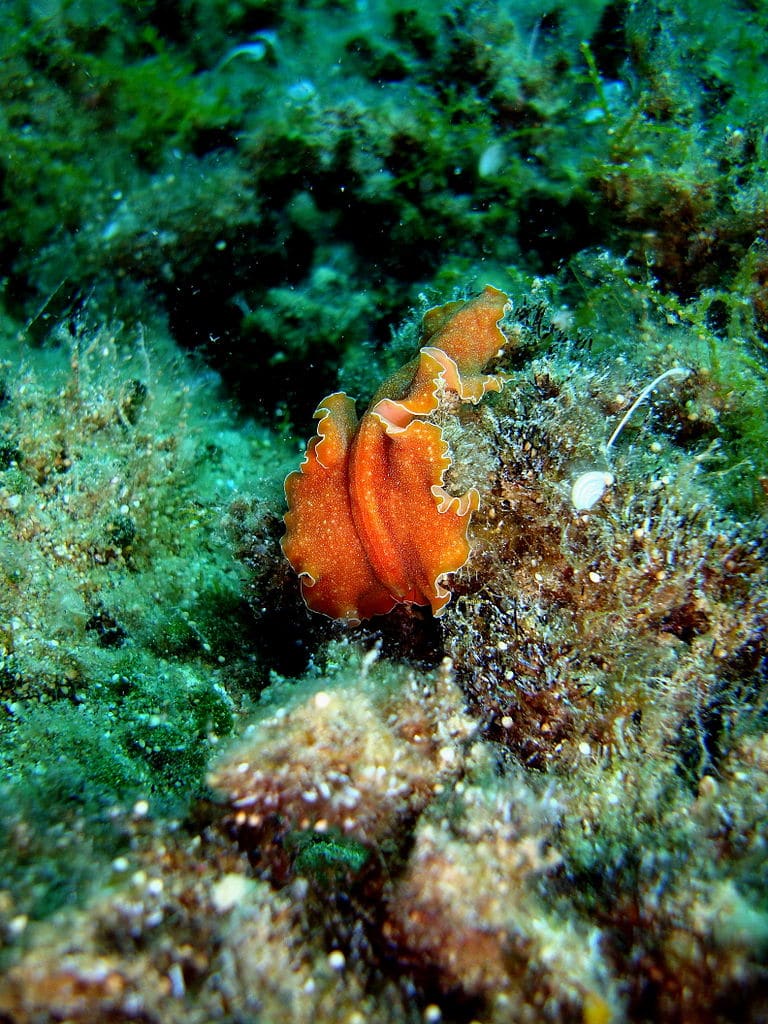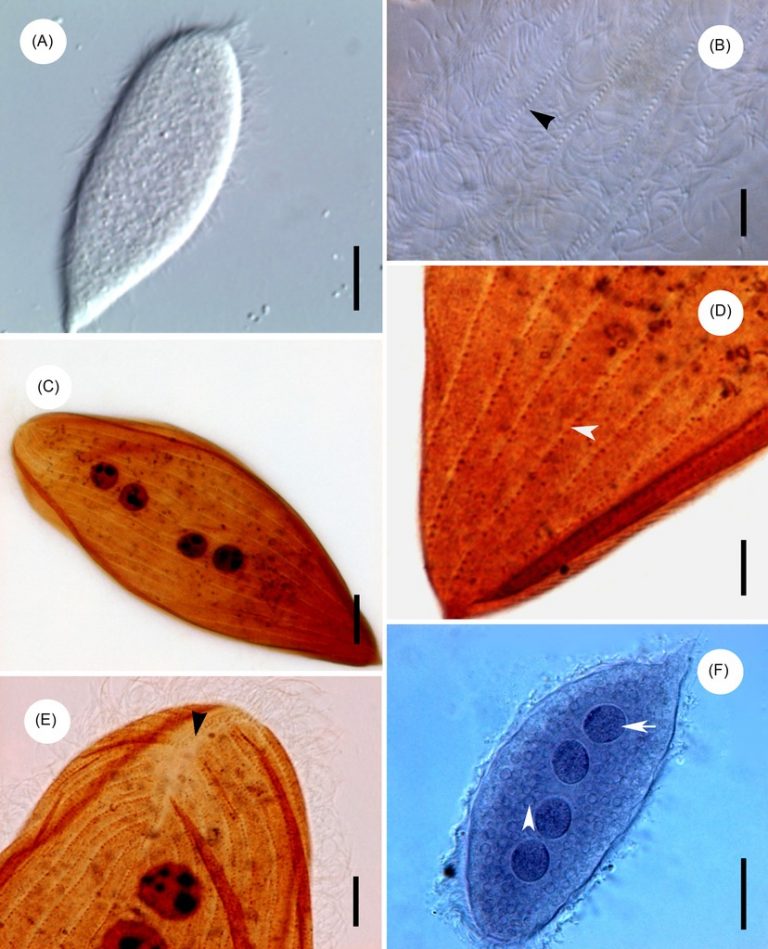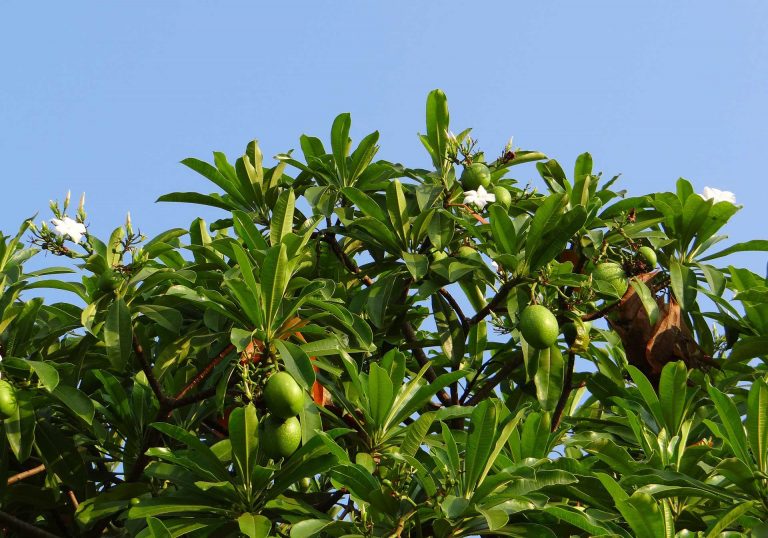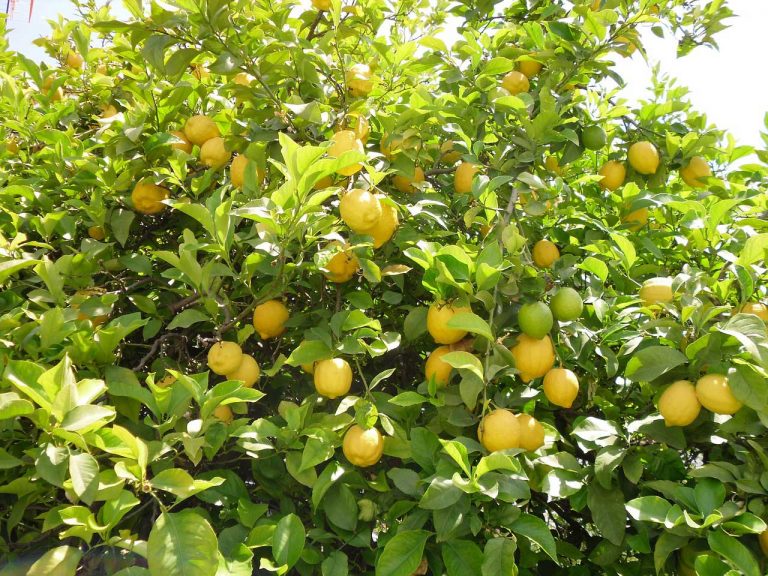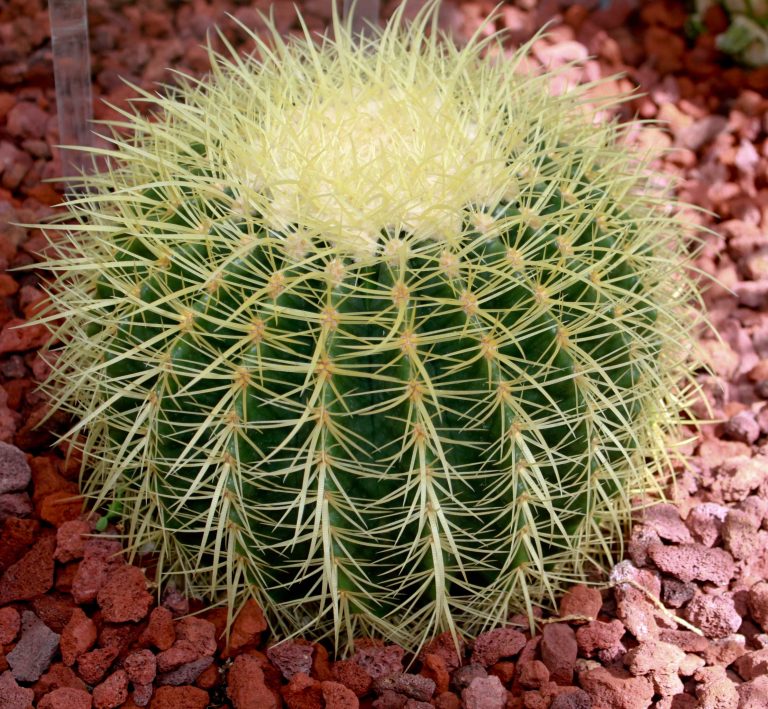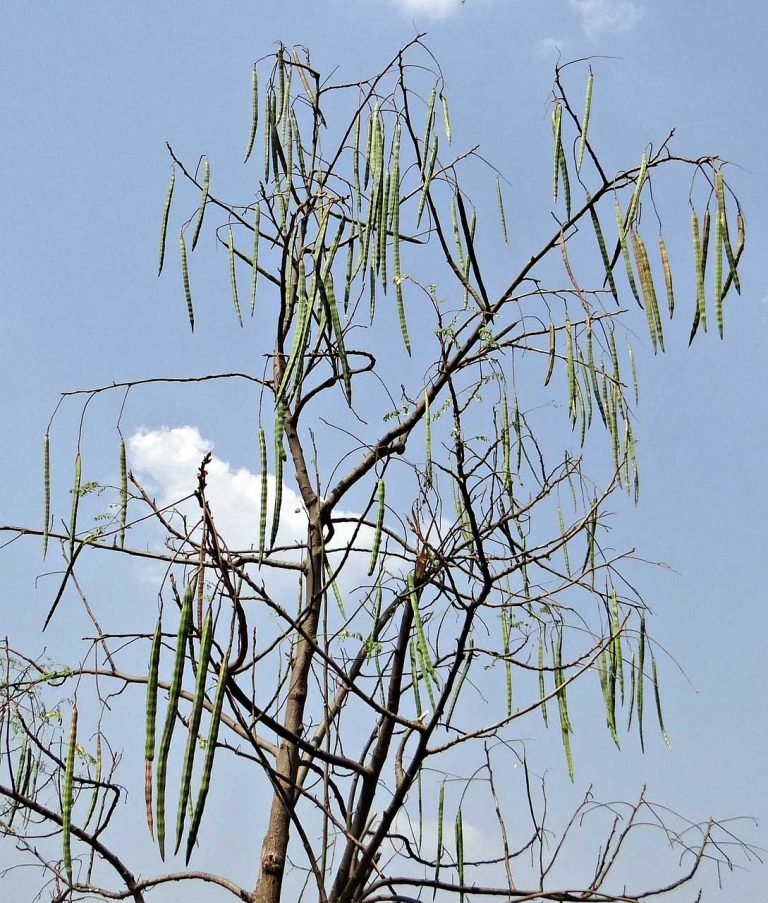Flatworms
Scientific Classification
| Kingdom: | Animalia |
| (Unranked): | Protostomia |
| (Unranked): | Spiralia |
| (Unranked): | Platyzoa |
| Phylum: | Platyhelminthes |
In the worm groups, the simplest is the Flatworms. The species in this group number almost 20,000. These parasitic or free-living worms are seen in several places. A parasite that lives on some other living host is perhaps harmful. The tapeworm is a flatworm, which is well known. It is possible for the tapeworm to enter into the digestive tract of a person and grow to great lengths. It further devours the host from the inside and causes danger to the host while it is growing and even eats much of the host and his food.
The flat worms, otherwise known as Platyhelminthes, is a Greek derivation of the word “flat”, with the root, otherwise called helminth, meaning “worm “These are a phylum of comparatively simple unsegmented, bilateral, vertebrates having soft bodies. Quite different from the other Bilaterians, these vertebrates are Acoelomates (which means, they have no body cavity), they do not possess any particular respiratory and circulatory organs; these organs cause a restriction of having flattened shapes that permits nutrients and oxygen to diffuse and pass through their body. There is only a single opening for the two intakes (intake of the nutrients) as well as ejection (removal of the waste that is not digested; this restricts the food from being processed on a continuous process.
Fossil History
The traditional Platyhelminth specimen preserved in the Eocene age Baltic Amber is a fossil that is placed in a monotypic species, called Micropalaeosoma Balticus, whereas the ancient sub fossil specimens belong to the schistosome eggs that were discovered with the ancient Egyptian mummies.
Classification
In the customary zoology texts, Platy helminthes are classified into Turbellaria (these are more of the non-parasitic animals like the Planarians), and are three distinct parasitic groups: Trematoda, Cestoda and Monogenea; further in 1985, the gigantic polyphyletic “Tuellaria” was divided into a dozed classification. The Monogenea, Trematoda and Cestoda were united in a new class Neodermata.
Turbellaria
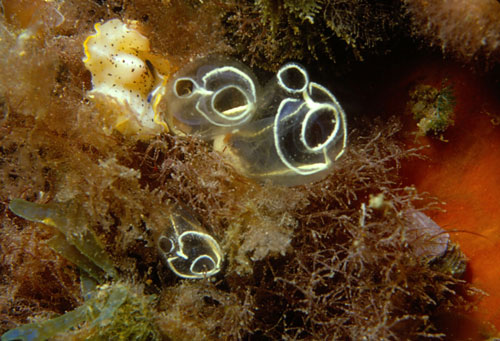
Photo by: Géry PARENT.
There are around 4.500 species of Turbellaria; most of them are free-living, of length ranging from 1 mm (0.039in) to 600 mm (24in). Many are scavengers or predators, most of the terrestrial species are nocturnal, they dwell in humid and shaded environments, like the crustaceans, and a few are parasites. Most of the free-living turbellarians are black, gray or brown in color. However, certain bigger ones come in brilliant colors. The Planarians, which are a subdivision of the Seriates, are well known for their capacity to regenerate in case they are separated by cuts across their body.
Neodermata
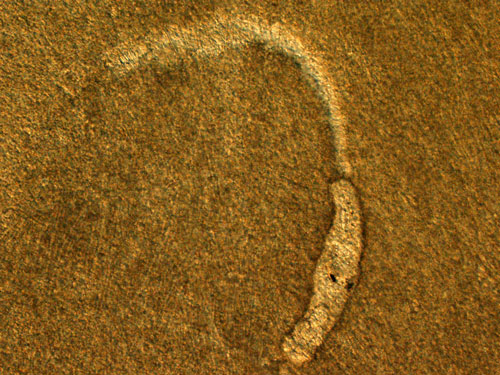
Photo by: Tomáš Macháček.
The names of these parasites, have reference to the cavities of their holdfasts (meaning hole in Greek), or suckers that they anchor onto their hosts. Al species, skin are asyncitium, a cell layer covered with just one membrane externally. Trematodes are separated into classes, Aspidogastrea and Digenea.
Monogenea
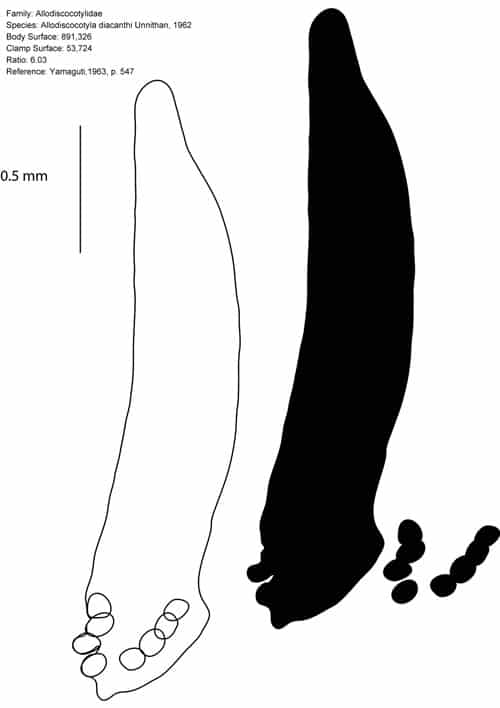
Illustration by: Jean-Lou Justine, Chahrazed Rahmouni, Delphine Gey, Charlotte Schoelinck, and Eric P. Hoberg.
Among the 1,100 species of monogeneans, the most belong to the external parasites that need a special species of host, mainly fish, but in certain situations aquatic reptiles or amphibians. But, some are internal parasites. The matured monogeneans possess big attachment organs at their hind portion, haptors (which means catch in Greek that have suckers, hooks and climbers. Most of them have bodies flattened. In certain varieties, the pharynx secretes enzymes for digesting the skin of the host and to permit the parasites to eat the cellular debris and the blood. The remaining ones graze on the external surface of the skin on flakes and the mucus of the host’s skin. The “Monogenea” name is based on the fact that they posses only a single generation of larvae.
Cestoda
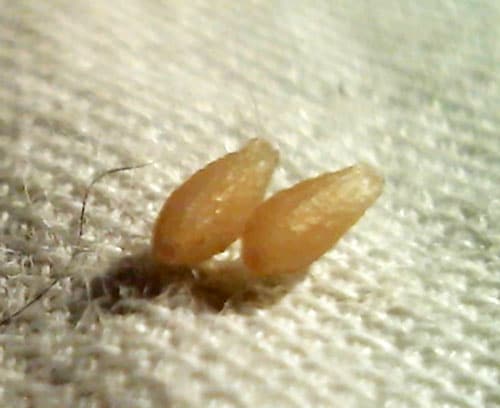
Illustration by: K.D. Schroeder.
These worms have earned their name on account of their slender, flat and also extremely long bodies. “Cestode” is the name derived from the Latin word Cestus, meaning “tape”. The adults, belonging to the 3,400 species of Cestode are the internal parasites. These Cestodes are short of guts and mouth, besides, the syncitial skin absorbs nutrients- mainly amino acids and carbohydrates, which they get from the host; besides, they mask it chemically so that the immune system of the host’s does not attack them. When the host is short of carbohydrates in their diet, the growth of the parasites gets stunted and some die. Normally the metabolism used is simple, however the chemical process is inefficient, compensation is done by taking in a great quantity of food compared to its size.
Habitat
Most of the predators are those flatworms that live freely; they live in shaded, humid terrestrial conditions or in water, where the environment is of leaf litter. The life cycle of the Trematodes (called flukes) and Cestodes (called tape worm) are complex. In their mature stages, they dwell as parasites in the fish’s digestive system or in the bodies of the invertebrates that live on land. At intermediate stages they infest the secondary hosts. The Trematodes excrete their eggs from the main hosts, but the adult Cestodes produce a great amount of hermaphroditic proglottids that look like segments, which, when mature get detached and excreted, after which they release their eggs. Quite different from the other parasites, the monogeneans infest animals that live in water, hence they are external parasites. Their larvae get attached to a suitable host and then are metamorphosed in the form of the adult. They are susceptible to loss of fluid, because they respire through the whole surface of the body. They are restricted from the environment where dehydration hardly occurs, like fresh water, sea, moist terrestrial surroundings, like leaf litter or in the midst of soil grains. They also live as parasites in other animals.
Anatomy
Platyhelminthes belong to the bilateral symmetrical animal group: The right and left side of these creatures are mirror images of one another, but their top and bottom parts are different, the end of the tail and head are also distinct. Similar to the other Bilaterians, they are composed of 3 main cell layers (the mesoderm, endoderm and ectoderm), whereas the Ctenophores and Cnidarians (called comb jellies) are symmetrical radially and possess just 2 cell layers. Apart from this, their definition lies not by any specific series by which they are specified, but in what they do not possess. Quite different from the other bilaterians, the Platyhelminthes, do not possess internal body cavity, thus they are representative of Acoelomates. Apart from this, they are deficient of particular respiratory and circulatory systems, these two truths are features that define a flat worm ‘sorgans’ when classified. They have unsegmented, soft bodies.
The void between the gut and the skin is filled with mesenchyme; this is a connective tissue composed of cells, and they are reinforced with fibers of collagen and they perform the role of a skeleton tape that provides points of attachments for the muscles. All the internal organs are contained in the mesenchyme, which provides a passage for the nutrients, oxygen and waste products. This consists of two main cell types: stem cells, which transform into some other type of cells, and are further used in regenerating tissues following any injury or in sexual reproduction, and the fixed cells, a few of them contain vacuoles filled with fluid. Most of the platyhelminths do not possess anus, they regurgitate food that is not digested through their mouth. But certain long varieties have mouths and certain ones have complex guts that are branched with multiple anus, because it becomes difficult for them to excrete only through the mouth.
Parasitic by Nature
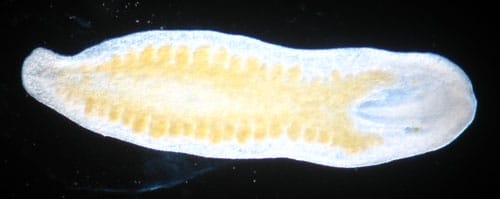
Illustration by: Christopher Laumer.
Because of the lack of internal body cavity, Platyhelminthes were considered at the primitive stage in the process of evolution of the bilaterians (they are animals whose bilateral are symmetrical and therefore having specific rear and front ends). But still, the analysis conducted in the middle of 1980’s has split up one sub-group, called the Acoelomorpha, which are the basal bilaterians – nearer to the original bilaterians, rather to any other recent groups.
The rest of the Platyhelminthes become a monophyletic group that contains just the descendants of a general ancestor which by its own become a member of the group. The Platyhelminthes that is redefined is a division of the Lophotrochozoa, one among the three main classes of the more complex bilaterians. By this analysis the redefined Platyhelminths with the exception of the Acoelomorpha, had two monophyletic subdivisions called the Rhabditophora and the Catenulida. “Turbellaria” is presently considered as paraphyletic, because it does not include the fully parasitic groups, even though they have descended from one class of “turbellarians”
More than half the flatworm species that are known to belong to the parasitic variety; a few of them are very harmful to human beings and to livestock. The second worst dangerous of all human diseases which parasites cause is Schistosomiasis, this is caused by a genus of Trematodes; it is surpassed only by malaria.
The prime cause of acquired epilepsy all over the world is Neurocysticercosis; this arises when the larvae from the pork tapeworm i.e. Taenia Solium pierce through the central nervous system. In developed countries, treatment of Platyhelminth parasites affecting human beings is increasing, for the reason that the popularity of semi cooked or raw meat and imported food from areas prone to high risk areas is also on the rise. In underdeveloped countries, the people over there are not rich enough to have sufficient fuel for cooking the food properly, besides, water supply that is not properly managed and irrigation projects are a cause for the increase of the menace presented by unhygienic farming and inefficient sanitation.
Indonesia, Philippines, New Guinea, Hawaii and Guam, 2 planarian species (Turbellaria class flatworms) were successfully employed in controlling the population of the imported giant, the African snail called Achatina Fulica that was replacing the native snail population. There is anxiety in North West Europe with regard to the spread of the New Zealand Planarian, the Arthurdendyus Triangulatus, which preys on earth worms.
Human Interaction
Digeneans (called flukes) and Cestodes (called tapeworms) are the cause of viral diseases in human beings and also in their livestock. Besides, monogeneans lead to great loss of stocks in fish farming. Schistosomiasis otherwise called Bilharzias (A parasitic infection on account of infested water) accounts for the second most dangerous parasitic disease existing in the tropical regions, after malaria. It is estimated at the Carter Center, that 200 million people covering 74 countries were infected by this disease, and half of these victims reside in Africa. The situation is that the rate of mortality is low; however, frequently this becomes a chronic disease, which is likely to destroy the internal organs. In children, there is a chance for it to impair their cognitive growth and maturity. And in adults, it increases the risk of bladder cancer. The cause of this disease is by many flukes of the Schistosome genus that are capable of piercing through human skin. Those people at most at risk are those using impure water for laundry or recreation.
In the year 2000, there was an estimate of 45 million people who were infected with a beef tapeworm called Taenia Saginata and by pork tapeworm (called Tania Solium) the people infected were 3 million. When the adult tapeworm infects the digestive system, it leads to abdominal symptoms, which becomes unpleasant, however never threaten life or cause disability.
As Pests
In Northern Europe, including the British Isles, people are concerned about the proliferation, of the New Zealand planarian called Arthurdendyus Triangulates and also the Australian flat worm, called Australoplana Sanguinea. The two prey on earthworms. It is believed that A. Triangulates had reached Europe via containers of plants that were imported by the botanical gardens.
Benefits
In Hawaii, they used the Planarian Endeavouria Septemlineata for controlling the imported giant, African snail, called Achatina Fulica that displaces the native snails, further, Platydemus Mmanokwari a different planarian was used in Indonesia, Philippines, Guam and New Guinea for the same reason.
Treatment of Tapeworm Infestation
Some tapeworm infested patients require no treatment as the tapeworm leaves the body without causing any damage. Many, however, are unaware of its presence in the absence of symptoms. Nevertheless, a diagnosis confirming an intestinal tapeworm infection cannot be taken lightly, and you will have to undergo treatment with drugs to eradicate it.
Mostly, oral medicines are sufficient for you to get complete relief, particularly those medicines that can expel the tapeworm permanently from your intestinal tract. The drugs prescribed could be Praziquantel (Biltricide), Nitazoxanide (Alinia) or Albendazole (Albenza).
Ayurvedic Treatment for Tapeworm Infestation
Ayurveda claims that poor sanitation and improperly cleaned vegetables and insufficiently cooked fish, meat and pork are the primary causes for tapeworm infestation.
Ayurveda, without any side effects, prescribes some definitive cures as given below.
Early morning, first take Jaggery, 20 grams and follow it up after 30 minutes with dried and powdered seeds of khurasani Ajwain which is Black Hen-bane or Stinking Nightshade (Hyoscyamus Niger), mixed with cold water. This is an effective treatment for almost all intestinal worms, including the tapeworm.
Another herbal treatment that is effective in expelling tapeworms is ingesting 2-3 grams of “Vidang” or the Embelia Ribes dried powder mixed with honey, on an empty stomach. Care should however be taken to take a purgative 24 hours before you ingest the proposed medicine.

Having discovered a fondness for insects while pursuing her degree in Biology, Randi Jones was quite bugged to know that people usually dismissed these little creatures as “creepy-crawlies”.

